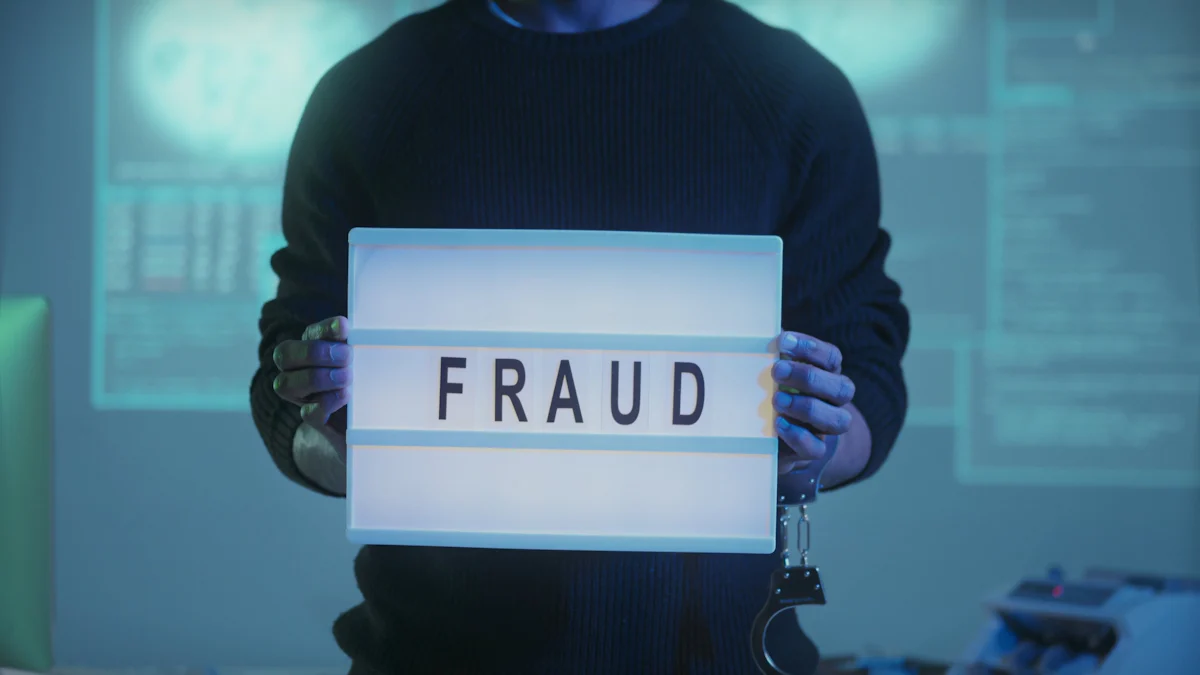Identifying and Avoiding Phishing Scams: A Comprehensive Guide
 Identifying and Avoiding Phishing Scams: A Comprehensive Guide
Identifying and Avoiding Phishing Scams: A Comprehensive Guide
Understanding Phishing
Phishing, a form of cyber fraud, has become increasingly prevalent in today's digital age, posing a significant threat to online security. Recognizing the signs of phishing, such as email phishing and online impersonation, is crucial for individuals to protect themselves from falling victim to fraudulent schemes. By understanding the tactics used by scammers, individuals can take proactive measures to avoid phishing scams and safeguard their personal and financial information.
Cybersecurity Expert: Understanding the tactics employed by cybercriminals is essential in combating the growing threat of phishing scams.
Recognizing Scam Emails
Phishing emails are a common tool used by cybercriminals to deceive individuals into divulging sensitive information. Recognizing the common characteristics and red flags associated with these fraudulent emails is essential in mitigating the risk of falling victim to phishing attempts.
Common Characteristics of Phishing Emails
Phishing emails often employ urgent language, compelling recipients to provide personal information or financial details promptly.
These fraudulent messages may also contain suspicious links or attachments that, if interacted with, can compromise the recipient's security and privacy.
Red Flags to Watch Out For
Misspelled words and grammatical errors are prevalent in phishing emails and serve as indicators of a potentially fraudulent message.
Requests for sensitive information, such as passwords or credit card numbers, should raise suspicion when received via email, prompting individuals to exercise caution and verify the authenticity of the sender before responding.
Detection Best Practices
Verifying Sender Authenticity
When dealing with emails, it's crucial to verify the legitimacy of the sender's email address before responding or taking any requested actions. Cybercriminals often utilize deceptive tactics to make their emails appear as though they are coming from a legitimate source. By carefully examining the sender's email address, individuals can identify potential phishing attempts and avoid falling victim to fraudulent schemes.
Cross-referencing the content of an email with previous communication from the purported sender can also be an effective method for detecting fraudulent emails. Discrepancies or inconsistencies in the content can serve as red flags, prompting individuals to exercise caution and further scrutinize the authenticity of the message.
Utilizing Email Security Features
Enabling spam filters and leveraging email authentication protocols are essential components of robust email security. Spam filters can effectively identify and divert suspicious emails, including potential phishing attempts, away from users' inboxes. Additionally, implementing email authentication protocols enhances the overall security posture by validating the authenticity of incoming messages.
Educating users about recognizing phishing attempts and providing clear guidelines for reporting suspicious emails is paramount in creating a safer online environment. By empowering individuals with knowledge about phishing detection techniques, organizations can collectively contribute to minimizing the risk posed by fraudulent emails.
Identifying Fraudulent Domains
Domain Spoofing and Impersonation
- Scammers employ deceptive tactics by creating fraudulent websites that closely resemble legitimate domains, aiming to deceive unsuspecting users into divulging sensitive information. These fake websites often mimic the branding and design of authentic sites to appear genuine at first glance. Analyzing the URL structures of websites and verifying the presence of HTTPS encryption can aid in identifying potentially fraudulent domains. Legitimate websites typically utilize HTTPS encryption to secure data transmitted between the user's browser and the website, while fraudulent sites may lack this essential security feature.
Leveraging WHOIS Lookup Tools
- WHOIS lookup tools offer valuable insights into domain ownership and registration details, enabling users to assess the legitimacy of websites. By utilizing these tools, individuals can access information such as the domain creation date, expiration date, and registrant details. Regularly monitoring domain registrations and expiration dates can assist in identifying suspicious or newly created domains associated with phishing attempts or fraudulent activities. This proactive approach empowers users to make informed decisions regarding the trustworthiness of online platforms, contributing to a safer browsing experience for all.
Preventing Impersonation Scams
Implementing Multi-Factor Authentication
Enhancing account security is paramount in mitigating the risk of falling victim to phishing and impersonation fraud. Implementing multi-factor authentication (MFA) methods adds an extra layer of protection, reducing the susceptibility to unauthorized access. By requiring multiple forms of verification, such as a password combined with a unique, one-time code sent to a trusted device, MFA significantly bolsters account security. Biometric authentication, including fingerprint or facial recognition, further fortifies the defense against unauthorized access attempts. One-time passwords generated through authenticator apps or text messages also serve as effective means of preventing unauthorized account access.
Educating Users on Phishing Risks
Raising awareness about phishing tactics and providing comprehensive training on recognizing fraudulent schemes is critical in empowering individuals to avoid falling victim to impersonation scams. By educating employees and users about the telltale signs of phishing attempts, organizations can actively involve their teams in maintaining a secure online environment. Regular updates about the latest phishing trends and prevention techniques are essential for equipping individuals with the knowledge needed to identify and thwart phishing attempts effectively.
Staying Vigilant
Remaining vigilant and well-informed about evolving phishing tactics is crucial for safeguarding against cyber fraud. Implementing proactive measures and educating others about online scam vigilance contribute to creating a more secure digital environment. By fostering a culture of cyber awareness, individuals and organizations can collectively work towards mitigating the impact of phishing scams.
